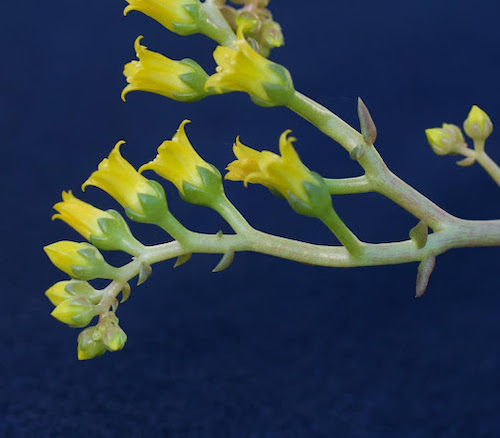Earth & Space
UC Santa Cruz names new, rare succulent species from Orange County
A new, rare species of succulent plant from Orange County has been named by Stephen McCabe, a researcher with the UC Santa Cruz Arboretum, with Kristen Hasenstab-Lehman and Matt Guiliams of the Santa Barbara Botanic Garden. The naming of new species is part of an effort by multiple entities to help conserve the many threatened species in the genus Dudleya, which are also known, ironically, as liveforevers.


A new, rare species of succulent plant from Orange County has been named by Stephen McCabe, a researcher with the UC Santa Cruz Arboretum, with Kristen Hasenstab-Lehman and Matt Guiliams of the Santa Barbara Botanic Garden. The naming of new species is part of an effort by multiple entities to help conserve the many threatened species in the genus Dudleya, which are also known, ironically, as liveforevers.
The species, Dudleya chasmophyta, the crevice-loving Dudleya, was named in the California Botanical Society journal Madroño. Local experts Fred Roberts and Ron Vanderhoff of the California Native Plant Society helped arrange access to the plants via the U.S. Forest Service, using their knowledge of Orange County botany.
Although the range of the new species is incredibly small, occupying one cliff band in one canyon, it is not as threatened by poaching as other species of Dudleya that have been in the news in the last few years. That’s because the cliffs on which it grows are steep and have friable rocks that make climbing unsafe. Private property, thorny shrubs, and poison oak also protect the plants. Two fires have impacted surrounding areas and the top and bottom of the population, but it is likely that most of the plants have survived the fires, according to Roberts and McCabe. Vanderhoff notes that this is the second species to be known only from Orange County, the other being the Laguna Beach Dudleya.
Seeds have been collected for seed banks in case poaching, climate change, landslides, or some catastrophe affects the new species. Dudleya chasmophyta had rarely been visited and was previously considered to be part of a federally endangered species from Malibu Canyon in Los Angeles County. David Verity found the original Orange County plants in about 1950 and considered them likely to be the same as the ones in Malibu Canyon 60+ miles away. Unfortunately, he apparently did not preserve a specimen. With the separation into two species and after fires in Malibu Canyon, McCabe says the Malibu Canyon Dudleya is now recognized to be even more critically rare than when it was listed as endangered.
The different gardens and groups concerned with the rare Dudleya are working to preserve habitat, seed-bank populations, conduct research, and educate the public about buying responsibly propagated plants, not plants poached from the wild.
Hasenstab-Lehman, Guilliams, and McCabe have submitted genetic research for publication that bolsters their argument for naming the new species. McCabe is also finishing up a phase of a long-term research project with Channel Islands National Park by publishing an article about Dudleya of the Channel Islands. The article in the Cactus and Succulent Journal may help the park, the Nature Conservancy, and the Navy plan for conservation of Dudleya on those islands.
Santa Cruz press contact: Abby Butler ajbutler@ucsc.edu or Stephen McCabe smccabe@ucsc.edu
Santa Barbara press contact: Kaylee Tu ktu@sbbotanicgarden.org